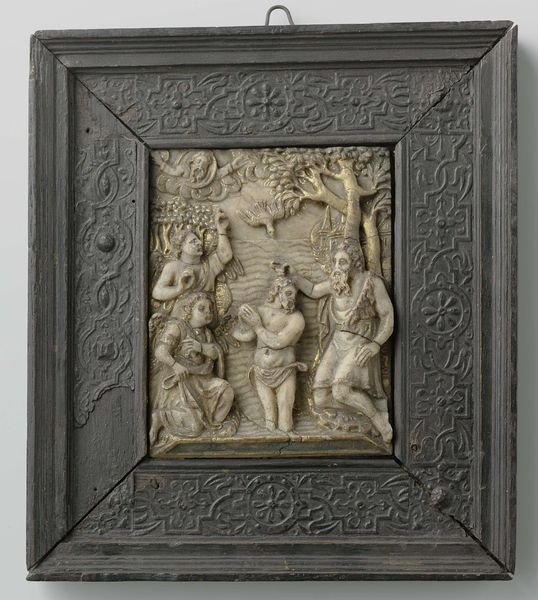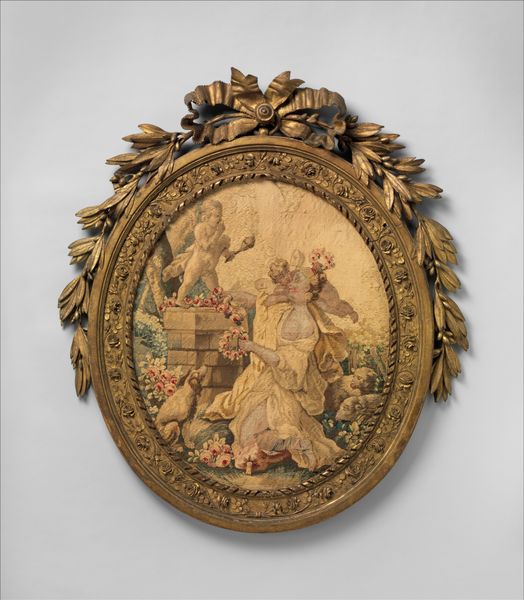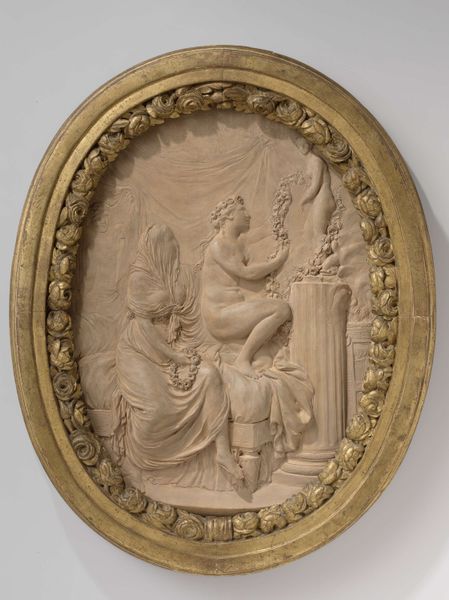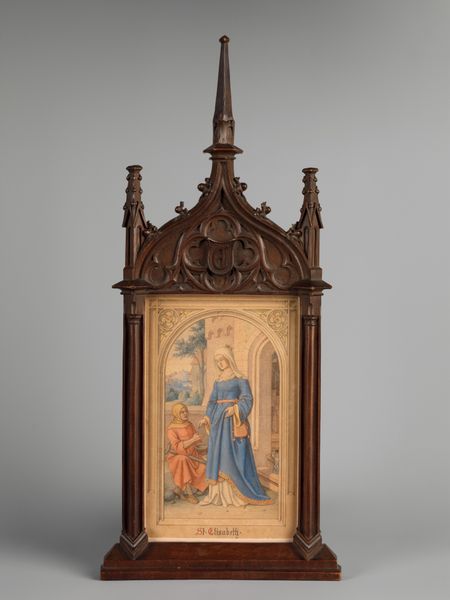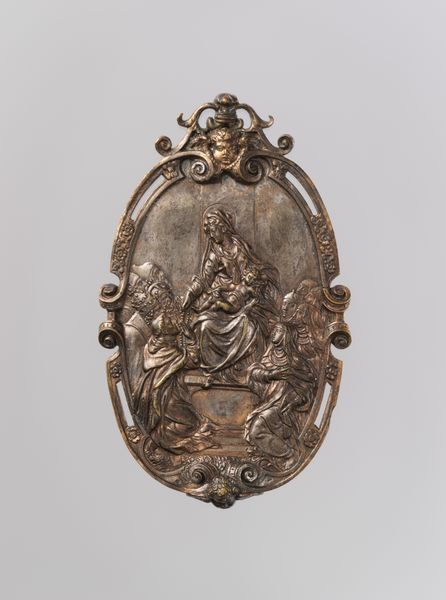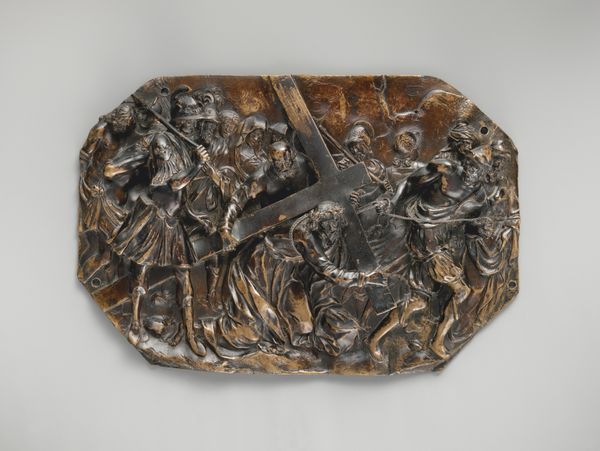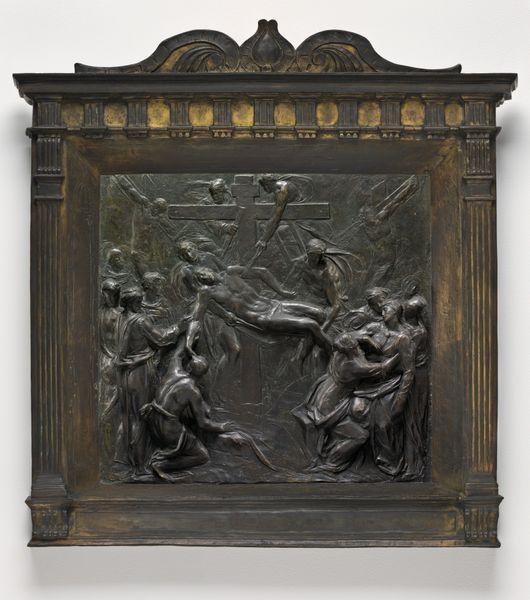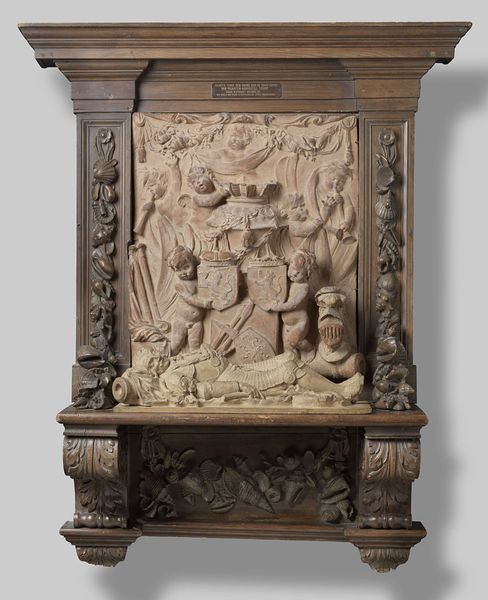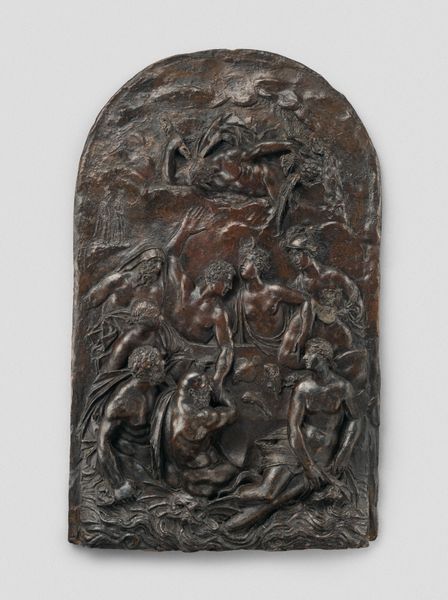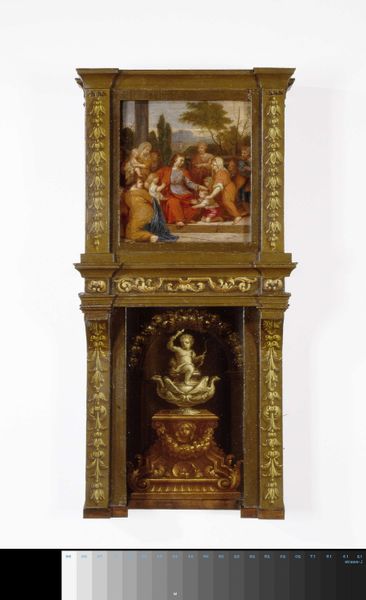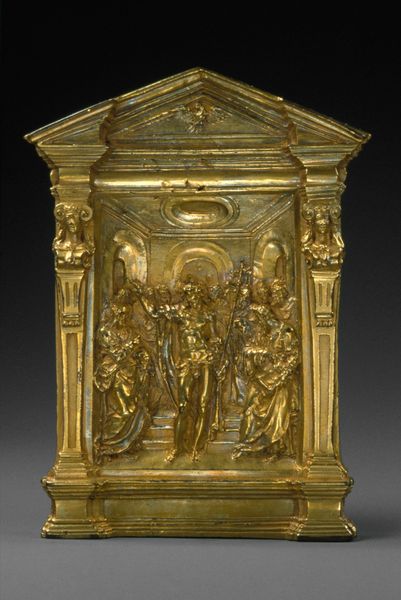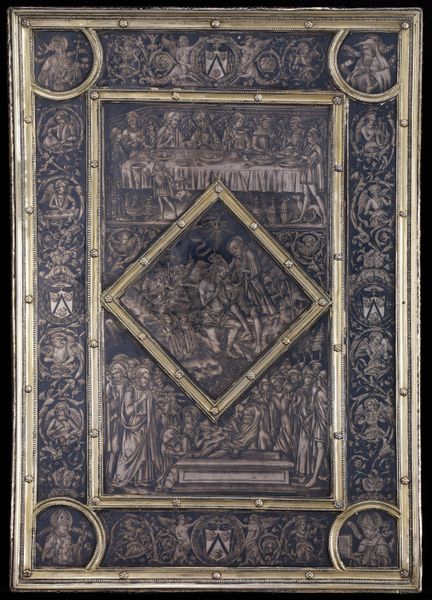
silver, metal, relief, sculpture
#
portrait
#
medieval
#
silver
#
metal
#
sculpture
#
relief
#
sculpture
#
history-painting
#
decorative-art
#
christ
Dimensions: Overall (relief only): H. 7 1/2 x W. 6 5/8 in. (19.1 x 16.8 cm); Framed (confirmed): H. 17 3/8 x W. 11 3/4 x D. 1 1/2 in. (44.1 x 29.8 x 3.8 cm)
Copyright: Public Domain
Editor: This is "Ecce Homo," a silver relief sculpture dating from 1585 to 1615. It’s currently located in the Metropolitan Museum of Art. The piece strikes me as intensely theatrical, with its dramatic figures and almost stage-like setting. What’s your perspective on its visual impact and artistic merit? Curator: Its visual impact is indeed remarkable. The composition is rigorously structured, a near-perfect balance between the figures in the foreground and the architectural details in the background. The use of silver enhances the play of light and shadow, emphasizing the textures and forms within the relief. Notice how the artist uses varying depths of relief to create a sense of perspective and depth. The very material, its coolness and sheen, directs how we interpret its artistic merit; in the metallic coolness there's also restraint and the weight of cultural memory of what took place in this Biblical episode. What do you observe about the arrangement of the figures and the symbolism embedded in their placement? Editor: I notice the figure of Christ is central, obviously, but also seems slightly set apart by a subtle framing effect achieved through the surrounding figures. He also seems a touch more luminous compared to those around him, as if spot-lit. It gives off a feeling of emotional and spiritual isolation. Curator: Precisely. That formal highlighting accentuates Christ's isolation and suffering. It is very subtly expressed within the whole tableau, isn’t it? The piece is so contained, self-referential in a formal way. There is something powerful about the artist’s ability to extract a deeply spiritual meaning through purely formal elements, in particular line, shape, texture and tone and their calculated juxtapositions. It feels a self-contained, unified representation. Editor: I hadn’t considered the power of the formal elements quite that way, thanks! It’s made me think differently about how visual language constructs meaning. Curator: A pleasure, it's what semiotics aims to uncover: layers of symbolic meaning. The sculpture here reminds us of the importance of purely aesthetic criteria, the better to unlock further interpretive depth.
Comments
No comments
Be the first to comment and join the conversation on the ultimate creative platform.

